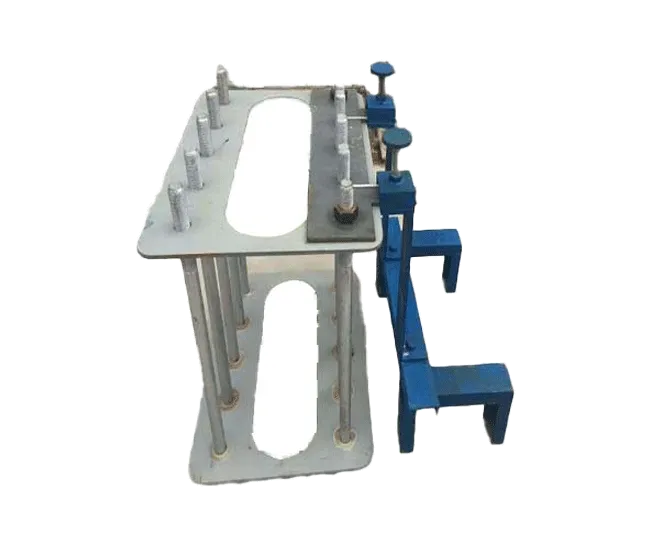Products Description
Positioning Jigs: Guaranteeing Precise Positioning in Precision Manufacturing
In precision manufacturing fields such as mechanical processing, welding assembly, and mold production, the positioning accuracy of workpieces directly determines the quality and performance of products. Positioning jigs (also known as positioning fixtures), as auxiliary tools specially designed for specific workpieces, firmly fix the workpiece in an accurate position through preset positioning datums and constraint structures, providing a stable and reliable operating basis for processes such as processing, welding, and assembly. They are key tools to achieve dimensional consistency and precision controllability in mass production.
I. Materials and Structure: Dual Guarantee of Precision and Durability
The material selection of positioning jigs needs to balance structural strength, wear resistance, and precision retention. Common types include:
- Alloy structural steel: Such as 45# steel and Cr12. After quenching and tempering, they have high hardness and rigidity, suitable for jigs that bear large clamping forces or are used for a long time, and can effectively resist impact and friction during workpiece processing;
- Cast iron: Such as gray cast iron and ductile iron, which have good shock absorption and wear resistance, and excellent machinability. They are often used for jig bases or supporting components with complex shapes and large positioning surfaces;
- Aluminum alloy: Lightweight and corrosion-resistant. After anodizing, the surface hardness is improved, suitable for positioning scenarios with high lightweight requirements or non-magnetic workpieces, such as the processing of thin-walled parts in the aerospace field;
- Engineering plastics: Such as epoxy resin and polyurethane, which have good insulation and buffering properties, can avoid scratching the workpiece surface, and are mostly used for positioning precision electronic components or polished parts.
Its structure usually consists of three parts: positioning elements (such as positioning pins, V-blocks, positioning plates), clamping devices (such as bolts, cylinders, eccentric wheels), and basic frameworks: Positioning elements are designed according to the shape and datum plane of the workpiece to ensure the only correct position of the workpiece; clamping devices fasten the workpiece through mechanical or pneumatic means to prevent displacement during processing; the basic framework provides rigid support for the overall structure to ensure the geometric accuracy of the jig itself.
II. Core Functions: Full-Process Control from "Positioning" to "Guaranteeing Standards"
The core function of positioning jigs is to provide accurate and stable positioning and clamping for workpieces, eliminate manual operation errors, and ensure the consistency of process quality. The specific roles are reflected in:
- Precise positioning: Through close cooperation with the workpiece's datum plane (such as holes, planes, contours), the workpiece is fixed at the preset X, Y, Z-axis coordinate positions, controlling the dimensional error of processing or assembly within the micrometer level or even higher precision range;
- Error-proof constraint: Some jigs are designed with foolproof structures. When the workpiece is placed in the wrong direction or the position is deviated, the jig cannot be closed or triggers an alarm, preventing unqualified products from flowing into the next process;
- Efficiency improvement: Compared with manual marking and positioning, jigs can realize rapid clamping of workpieces, greatly reducing auxiliary time, and can significantly improve the process rhythm especially in mass production;
- Lowering the threshold: It reduces the dependence on the skill proficiency of operators. Even novices can complete high-precision positioning operations with the help of jigs, reducing the impact of human factors on product quality.
Whether it is the welding jig for auto parts, the processing jig for mold cavities, or the assembly jig for electronic products, their core value lies in transforming "experience dependence" into "tooling guarantee" to achieve standardized production.
III. Design Principles and Adaptable Scenarios
The design of positioning jigs needs to follow the principle of "balancing specificity and versatility" and be customized according to workpiece characteristics and production needs:
- Specialized positioning jigs: Designed for a single type of workpiece, with extremely high positioning accuracy (usually ≤0.01mm), such as boring jigs for engine blocks and assembly jigs for gearboxes, suitable for mass and high-precision production scenarios;
- Modular positioning jigs: Composed of standardized modules (such as positioning blocks, guide pillars, clamping units), they can adapt to multiple workpieces by replacing modules, with strong flexibility, suitable for multi-variety and small-batch production, such as the trial production stage of auto parts;
- Flexible positioning jigs: Combining numerical control technology and servo drive, the position of positioning elements is controlled by programs to realize automatic positioning and clamping of different workpieces, suitable for intelligent production lines or rapid changeover needs, such as adaptive jigs in robot welding workstations.
From traditional mechanical processing to intelligent manufacturing, the form of positioning jigs has been evolving, but the core logic of "guaranteeing precision with tooling" has remained unchanged.
IV. Precision Calibration and Maintenance: The Key to Extending Service Life
To ensure that positioning jigs maintain precision for a long time, regular calibration and maintenance are required:
- Precision calibration: Use tools such as coordinate measuring machines and dial indicators to detect the displacement error of positioning elements. When the deviation exceeds the allowable range (such as more than 0.02mm), it needs to be repaired by grinding, adjusting gaskets, etc.;
- Daily maintenance: After work, clean the iron filings and oil stains on the surface of the jig, and add lubricating oil to moving parts (such as guide rails, pins) to prevent rust or jamming;
- Storage protection: Long-term idle jigs need to be coated with anti-rust oil and covered with dust covers to avoid precision attenuation caused by environmental factors.
These measures can effectively extend the service life of the jigs and ensure that they continue to play a stable role during the production cycle.
Summary
Although positioning jigs are "auxiliary tools" in the production process, they are indispensable "precision cornerstones" in precision manufacturing. With customized structural design, they transform abstract dimensional requirements into concrete tooling constraints, replacing manual experience with mechanical precision. In high-end manufacturing fields such as automobiles, aviation, molds, and electronics, they silently guard the dimensional accuracy and quality stability of each workpiece. With the development of intelligent manufacturing, positioning jigs are upgrading from "passive positioning" to "active perception", becoming a key link connecting automated equipment and high-quality products.



